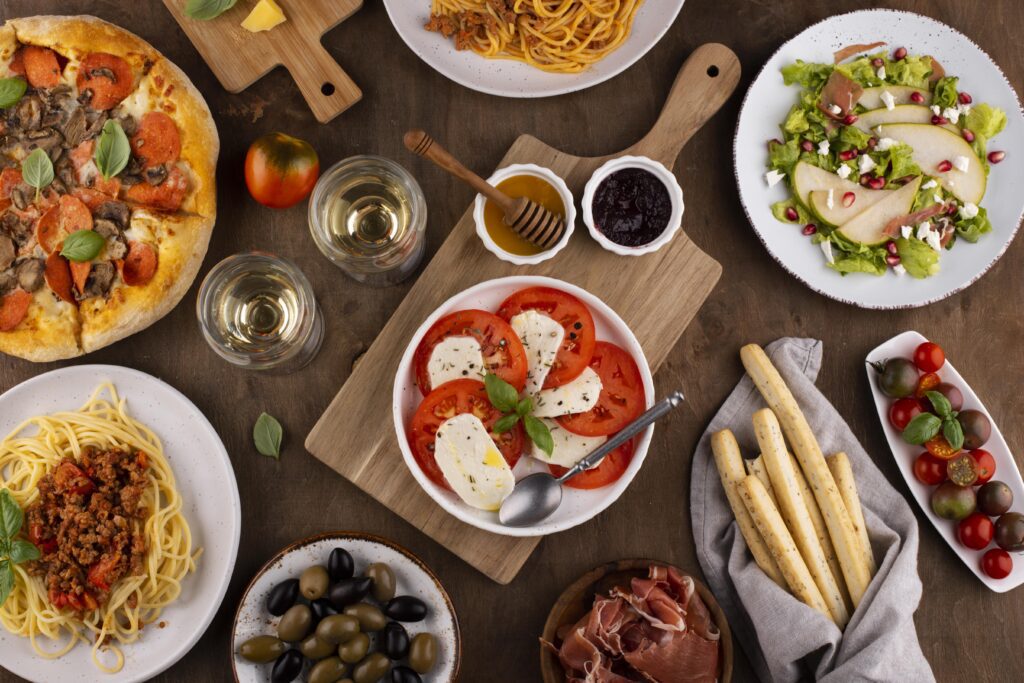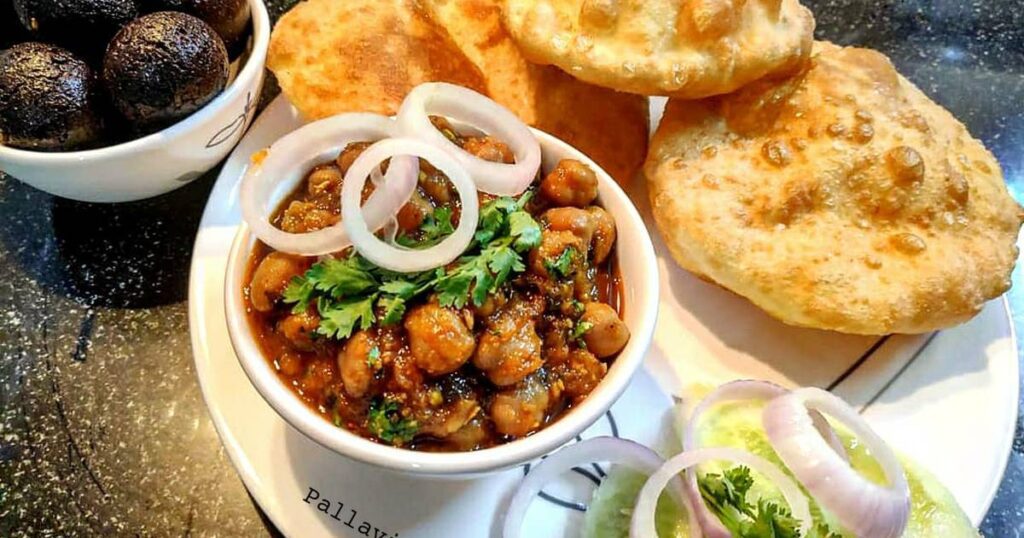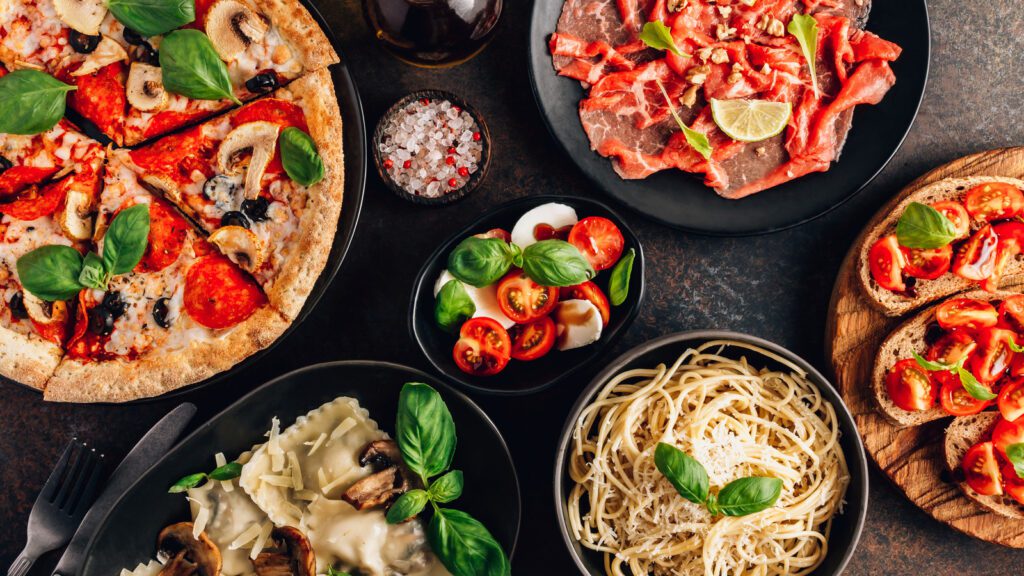

India’s long association with Britain taught the British palate to more intense tastes. Turmeric, cumin, and cardamom were put into the sauces. The chutney was also introduced to the British by the East India Company. Faster lifestyles in metropolitan areas have resulted in the elimination of time-consuming meat dishes like stews and casseroles from the daily menu. Chops, steaks, and cutlets are becoming more popular because they are prepared more easily. Because international cuisine is a part of the cultural heritage and identity of a place, tourism and international cuisine are intertwined. The cuisine that tourists can enjoy defines a destination. Similar to the music, dance, and art of a city, its cuisine also creates a distinct identity and expression.
International cuisine can shape its perceived image. Enjoying foreign and international cuisine has become a part of a new post-modern culture characterized by a variety and aesthetic experiences. These experiences have led to new patterns of tourism consumption and the emergence of new distinct identities.
Table of Contents
New York City as a Culinary Destination


- The choice of international cuisine reflects the cosmopolitan nature of the city. Over 1600 restaurants are listed on the city’s official website. The New York City website lists a total of 60 different international cuisines as available.
- Alphabetically arranged, the international cuisines range from African to Vietnamese. The city’s enclaves host a variety of international cuisines. The Bronx has a reputation for Italian and West Indian cuisine. Indian, Pakistani, and Bangladeshi cuisine are all well-known to Queens.
- Brooklyn has famous Puerto Rican, Jamaican, and Jewish restaurants. Staten Island for Mexican and Sri Lankan food; Manhattan, in which Korean, Chinese, and African American international cuisines are served.
- Hot dogs, Manhattan Clam Chowder, Cheesecake, Pizza, Bagel, Pastrami, Corned beef, Pretzels, Knish, Eggs Benedict, Newberg lobster, Waldorf salad, Doughnut, Delmonico steak, and Black and White cookies are all dishes that are typically associated with New York City. New York City’s massive population of Eastern European Jews and their descendants is responsible for a large part of the international cuisine that is commonly associated with the city.
- Originally owned by the Jewish community of New York, the world-famous New York institution of the “Delicatessen,” also known as a “Deli।” Much of New York City’s Jewish fare, particularly bagels, has become internationally popular. Jewish people in New York City love Chinese food, which many consider their second ethnic international cuisine.
New Delhi as a Culinary Destination


- According to a thorough review of food blogs and portals such as Zomato and Trip Adviser, “North Indian”, “Mughlai”, “Street Food”, “Chinese”, “South Indian”, and “Desserts” are Delhi NCR’s most popular cuisines.
- The most popular restaurants in Delhi are the “Gulati” at Pandara Road and the “Karims” near Jama Masjid. Delhi’s cuisine is influenced by a variety of cultures, including Punjabi, Mughlai, Jain, Bengali, etc. Chole Bhature, Daulat ki Chaat, Bhalla Papdi, etc. are iconic dishes.
- The official DTTDC website states that the cuisine of Old Delhi is a gem for gourmets and historians. “Paranthe wali gali” and “Moti mahal” are some places you should visit.
- The Ministry of Tourism’s 2015–2016 Annual Report states, “For promotion of Indian Cuisine, which is an integral component of the Indian Tourism product, support has been extended to Indian Food Festivals by sponsoring Indian Chefs for the food festivals organized in the following countries: Singapore, Kuala Lumpur, Tokyo, Osaka, Ecuador (Bogota), Ramallah (Palestine), Veracruz (Mexico), Beirut (Lebanon), Cairo, Madagascar, Venice, and Rome”.
The Basics of International Cuisine
Most people have a routine list of things they like to eat. Although these dishes are usually made in North America, if you are a foreigner or have ethnic origins in your family, you have likely been exposed to a far more diverse range of international cuisine (a fancy way of referring to all the various foods, dishes, and cooking styles from a particular culture).
You will be shocked to learn that, even if you don’t think you know much about international cuisine, a lot of the foods we eat every day and consider to be part of the average Canadian diet have their roots in countries farther away. For instance, Canada has a relatively widespread culture of pasta; I am sure you would enjoy a huge plate of spaghetti with meatballs), but both of these are more familiar with Italian cuisine.
But even Italians can’t say they invented the noodle, which was probably made in China. This one example alone shows how different international cuisines around the world have borrowed from each other and evolved over time. 400 years ago, what we call Canadian food didn’t exist.
The First Nations people who inhabited the land first ate wild plants and animals. In International Cuisine, species may consume fish, bison, caribou, seal, wild berries, and seeds.
The nutritional value, availability, storage, and transportability were the focus. Traditional dishes were basic and high in calories before Europeans arrived. Fur traders introduced dishes like bannock, which are mostly similar to the Scottish scone. Maple syrup and other Canadian dishes are owed to First Nations.
The Cuisine of India


- Indians understand that cows are more valuable alive because they can eat more milk than flesh throughout their lifetime. Indian cuisine uses a lot of milk products. Ghee is a common ingredient in many Indian dishes, and yoghurt, buttermilk, and cheese are also commonly used. These products have a longer shelf life than fresh milk, and this is especially useful in the hotter regions of the country. However, Indian cuisine has even more flavours. These include saffron, black mustard seed, turmeric, nutmeg, garlic, black pepper, mint, cinnamon, and more.
- Herbs and spices have more than just to spice up a dish. They are occasionally used to add colour, fragrance, or thickness to a dish. Like, saffron adds brightness and sweetness. Rice is an integral part of Indian cuisine. In fact, more than 5,000 years ago, India cultivated rice, the world’s most cultivated cereal grain. Rice cultivation accounts for one-third of India’s arable land. Basmati rice is a very popular type of rice that is most valued.
- Basmati rice is a long-grain rice type that is widely grown in southern and eastern Asia. There are several varieties of this rice that are used in Indian cooking. Basmati has a lovely nutty taste and fragrance. Basmati, although it sounds exotic, is widely available in Canada’s grocery stores. In India rice is cooked, steamed, or fried, and it is flavoured with Indian spices like saffron and turmeric. Flatbread is another staple of Indian cuisine. In fact, flatbreads are more common than rice in northern and central India. These breads, which are often unleavened and not risen, are frequently added to savoury curry and are used as a means of soaking the delicious sauce.
- Different breads are made from different grains depending on the region. North uses millet flour, while South often makes bread with rice flour. Roti or chapatti is the basic skillet-baked whole wheat bread. Papadums are thin, crisp wafers made from black urad beans, which are related to the mung bean, a small green Indian bean. They are often sold dried, then they are roasted, grilled, or fried at home. In India, masala chai is drunk with great regularity; it is the spicy, milky, and sweet drink we now drink so often in the West.
- Masala chai literally means “spiced tea” because the word “masala” literally means “spice blend”. Boiling milk, water, loose black tea leaves, and a variety of spices make this a delicious beverage. Each Indian family has its own recipe, and this spice mix varies from region to region. But cinnamon, ginger, cloves, cardamom, and pepper are the spices that are most commonly used. Most of the time, masala chai is sweetened with sugar or honey, creating a hot, creamy, and fragranced beverage that warms the drinker to the core.
The Cuisine of France


Bretaigne simply accepts its food and cooks it. The coast has excellent Belon oysters and the sea has a lot of fish. Bretagne is also responsible for creating the French version of the pancake, the tender crepe.
The famous sparkling wine, named after the province, Champagne is an essential part of French cuisine. The region produces excellent ham and sausages, and neighbouring Flanders has invented many different ways to serve the Herrings, even though its food selection is limited.
Touraine is often referred to as ‘the garden of France’. It can be as light as Trout in Aspic or as strong as Roast Pork with Prunes. The Chateaux Country, which runs through the Loire Valley, is where French kings relaxed in the beauty of their country estates while their chefs prepared the majority of the region’s fine fruits and vegetables.
Le Grande Cuisine, a classic cooking style, originated in the rich land around Paris. French cooking became a high art here, in the cavernous kitchens of kings and lords. Cooks fought each other to create even more complex dishes. While Lle de France’s cuisine does not possess a distinctive regional personality, it draws on culinary genius.
The Cuisine of Japan


Japan has a remarkable and delectable culinary history, so it’s not a surprise that its cuisine has become globally famous. Sashimi, especially, is something that most people have heard about, even if they have never tried it. Sashimi is made with very fresh raw fish or shellfish cut very thinly to make the fish look and taste better. Sushi is a versatile dish that comes in a variety of flavours.
Teriyaki is another well-known Japanese dish. Teriyaki is a Japanese cooking style in which meat is grilled while it is coated or basted in a marinade. Teriyaki marinade isn’t the only one in Japan that bastes the meat as it grills. Traditionally, teriyaki marinade is made by adding soy sauce, a sweetener like sugar or honey, and mirin, a sweet Japanese rice wine. This combination combines salty, savoury, and sweet tastes with mirin’s bright flavour element. Once it is mixed, the liquid is boiled to thicken the sauce and concentrate the flavours. Then it is used as a marinade and grilling condiment for the meat.
The Cuisine of Italy


Italy has a wide range of cheese. Hard Parmesan, blue Gorgonzola, elastic Mozzarella, soft creamy Ricotta and Mascarpone are all famous.
Pasta is a firm dough made of durum wheat, semolina, and eggs. It can be flavoured and coloured with vegetable purees (spinach, basil, mint, saffron, squid ink), herbs, etc.
Fresh pasta is very perishable, so it should be eaten within one day. You can pack and sell dry pasta. Pasta are called in a number of different ways based on their shape. For example, a tubular penne, a bow-shaped farfalle, sheets of Lasagna, thin long strips of Fettucine, sea shell-shaped conchiglie, etc. Mashed potatoes are used to make popular pasta Gnocchi.
More than any other European nation, Italy truly adopted the New World ingredients that were brought from Latin America in the 16th century. Today, tomato is almost impossible to associate with Italian cuisine. Italian cuisine has a lot of tomatoes, whether it’s in rich and rustic tomato sauces or the traditional Caprese salad, which is made of fresh raw tomatoes, mozzarella, and basil leaves, all mixed with extra-virgin olive oil. In Italy, tomatoes are allowed to ripen on the vine before being sold, which makes them especially tasty.
Not surprisingly, many Italian dishes use them raw. Potatoes are used to make gnocchi, which is eaten as an appetiser instead of soup or pasta. Polenta, a dish made from finely ground cornmeal boiled in water or stock, has corn as its main ingredient. Polenta, a traditional peasant dish, is made with starch and served with meat and vegetables. When it comes to Italian cooking, these are just a few of the vegetables. Italian vegetables like eggplant, zucchini, peppers, spinach, and other leafy greens are popular.
The Cuisine of Latin America


This vast and diverse area can be divided into three different geographical zones: the rich Pacific, where a lot of fruit and sugar is cultivated; the central highlands, where coffee is grown and cattle are raised; and the northeast’s forested area, which is not good for agriculture. Although rice, beans, and corn are common staples in all of these areas, each region has its own special dishes.
Tropical coast international cuisine in Panama, Nicaragua, Belize, and Honduras uses ingredients like coconut, plantains, bananas, and cassava, a woody shrub that grows in most of Latin America. Cassava has a starchy root that can be eaten in chunks or mashed potatoes. International Cuisine
Guatemala, which has the largest Native American population, uses traditional Mayan international cuisine. This international cuisine uses methods that have been used for many centuries and includes dishes made with corn, beans, squash, and some turkey.
Central Americans start their day with an early breakfast of strong coffee, beans, and tortillas. Cheese and egg will sometimes be included, but they may be more costly. However, Mexicans usually start their day with a big breakfast of eggs, which are often fried and served over tortillas with a tomato and chilli sauce that makes the famous huevos rancheros.
Millets: A Culinary Journey of Tradition and Innovation


For dry-land farmers, millet crops are very nutritious and climate-compliant. The preparation of millet has resulted in a decrease in the country’s consumption. Thus, inventive efforts to produce millet-based value-added products are necessary. ICAR-IMR is constantly working with partnering institutions and stakeholders in order to revive the demand for millet in India.
Healthy foods with exceptional quality and shelf-life are more popular today. The demand for various types of convenient traditional foods has also increased due to the busy lives of people. Everyone’s needs and demands can be met by adding millet to your diet.
Millet-based diets can also help prevent and manage diabetes, obesity, heart disease, and other lifestyle diseases. Globally, consumers are learning about the benefits of ancient grains and are interested in adding millet to their daily diets. However, there are few recipes for millets that would be familiar to people from other countries because millets have traditionally only been consumed in the arid and semi-arid tropics.
Why Denmark has the most sustainable food sector


To make more with less and turn waste into new high-value products, the Danish food industry is among the world’s most sustainable and cost-effective. It produces enough food to feed three times its own population through imports of agricultural commodities and resourceful crop and livestock farming.
Denmark’s long history of cooperation between businesses, government agencies, and research institutions has contributed to the development of this innovative and knowledge-intensive food industry. This has secured Denmark’s global position as a leader in resource efficiency and a supplier of food products that are internationally competitive. Since 1971, our food and agriculture industry has benefited from environmental regulations. Before that time, public institutions had collaborated with companies to shape and develop the Danish food industry.
Following the 2030 sustainable development agenda requires cross-disciplinary collaboration. Denmark is providing proven technology to support the move towards sustainable agriculture and food processing and to ensure universal access to healthy, safe-to-eat foods as demand for animal and plant-based foods worldwide increases. Such technology is essential to stop hunger, malnourishment, and lifestyle diseases, which are becoming more prevalent all over the world. We are committed to making tangible progress towards global sustainable development goals by drawing on our collective expertise while inspiring others to do the same.
The Danish food and agriculture sector has a solid track record for resource efficiency. Since 1990, production has grown by almost a third, but greenhouse gas emissions have decreased by approximately 16% during the same time. Since 2000, food manufacturers alone have experienced a 35% decrease in emissions. Throughout the food value chain, businesses, authorities, universities, and research institutions have worked together to produce these results.
Now that the low-hanging fruit has been harvested, the next task is to reach even higher net reductions in emissions. Once again, to find and implement the best possible solutions, extensive collaboration will be required.
Staples of Latin American Cooking


The variety of ethnic cultures that exist across diverse geographical regions, the settlement history, and the economic growth of the region are all factors that contribute to the diversity of American cuisine. This region, which stretches from mainland Mexico, through Central America, into the huge expanse of South America, and east to encompass the entire Caribbean region, has a great diversity of places, people, and climates.
Also, due to the colonization that happened hundreds of years ago, this region has some culinary influences from Europe (mainly Spanish). This has given cohesion to the foundation laid by the native Latin American culinary traditions. Latin American cuisine uses maize (corn), beans, and salsas made from tomatoes and peppers.
Spanish conquistadors brought many other foods to Latin America, including rice. Beans and rice are two other staples of Latin American cooking that are often served together. Latin American cuisine has always included aromatic ingredients, especially garlic and onions. Also, spicy peppers, hot sauce, and salsas are used.
Central Americans start their day with an early breakfast of strong coffee, beans, and tortillas. Cheese and egg will sometimes be included. Lunch is eaten around 1 pm, as in South America, and is considered the main meal of the day. In Latin America, maize (corn), tomatoes and bell peppers (red, green, and yellow) are very popular because of the climate these vegetables need to grow.
In this area, olive oil is widely used, and green olives are added to many dishes. Regionalism is a part of Mexican cuisine as it is in Central American cuisine. In the 1800s, French pastries were popular in Central Mexico। South Mexico is known for its amazing range of dried chillies. Mexican dishes like enchiladas and tacos are made in Western nations. As you might expect, coastal areas are famous for adding fish to a lot of dishes.
Conclusion
India’s long association with Britain taught the British palate to more intense tastes. Turmeric, cumin, and cardamom were put into the sauces. The chutney was also introduced to the British by the East India Company. International cuisine can shape its perceived image. Enjoying foreign and international cuisine has become a part of a new post-modern culture characterized by a variety and aesthetic experiences. These experiences have led to new patterns of tourism consumption and the emergence of new distinct identities.
The New York City website lists a total of 60 different international cuisines as available. Alphabetically arranged, the international cuisines range from African to Vietnamese. The city’s enclaves host a variety of international cuisines. The most popular restaurants in Delhi are the “Gulati” at Pandara Road and the “Karims” near Jama Masjid. Delhi’s cuisine is influenced by a variety of cultures, including Punjabi, Mughlai, Jain, Bengali, etc. Chole Bhature, Daulat ki Chaat, Bhalla Papdi, etc. are iconic dishes. Traditional dishes were basic and high in calories before Europeans arrived. Fur traders introduced dishes like bannock, which are mostly similar to the Scottish scone.
Maple syrup and other Canadian dishes are owed to First Nations. Ghee is a common ingredient in many Indian dishes, and yoghurt, buttermilk, and cheese are also commonly used. These products have a longer shelf life than fresh milk, and this is especially useful in the hotter regions of the country. However, Indian cuisine has even more flavours. Touraine is often referred to as ‘the garden of France’. It can be as light as Trout in Aspic or as strong as Roast Pork with Prunes. The Chateaux Country, which runs through the Loire Valley, is where French kings relaxed in the beauty of their country estates while their chefs prepared the majority of the region’s fine fruits and vegetables.
To make more with less and turn waste into new high-value products, the Danish food industry is among the world’s most sustainable and cost-effective. It produces enough food to feed three times its own population through imports of agricultural commodities and resourceful crop and livestock farming.
